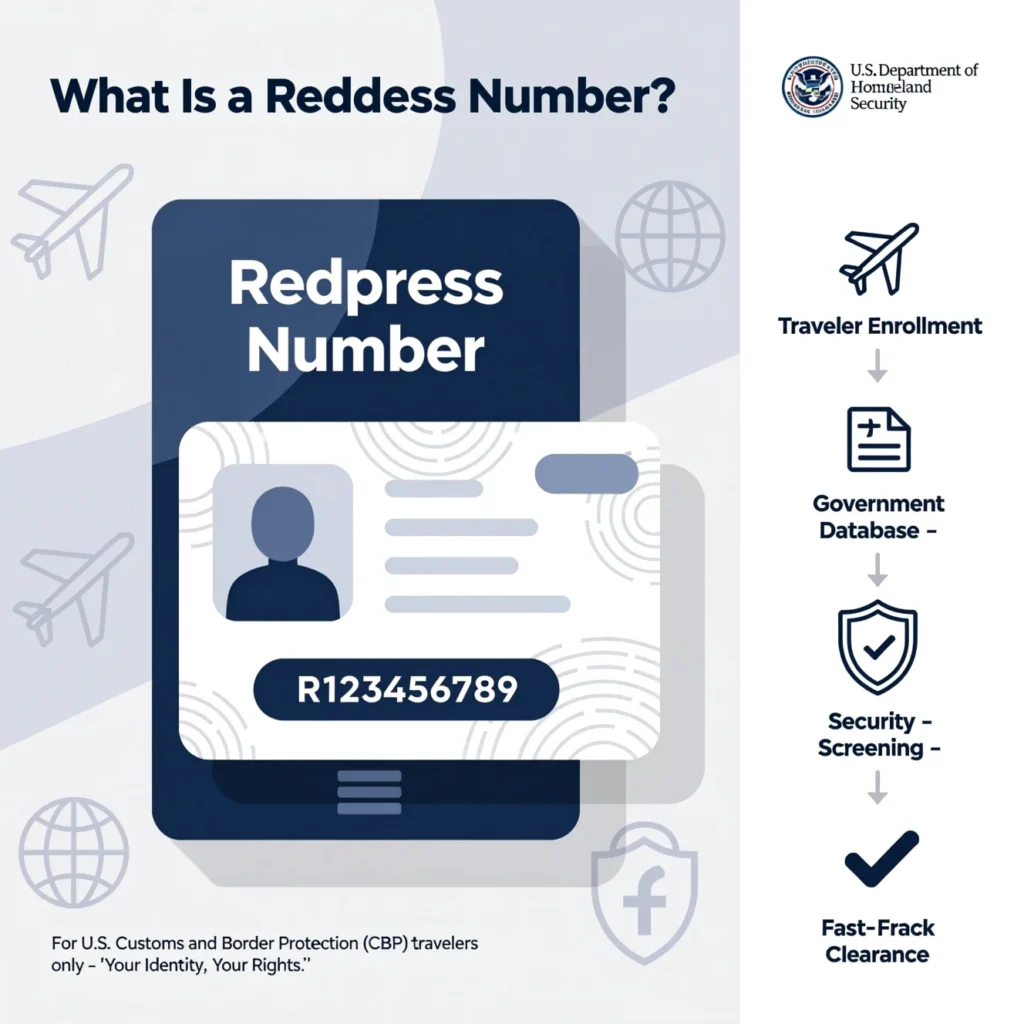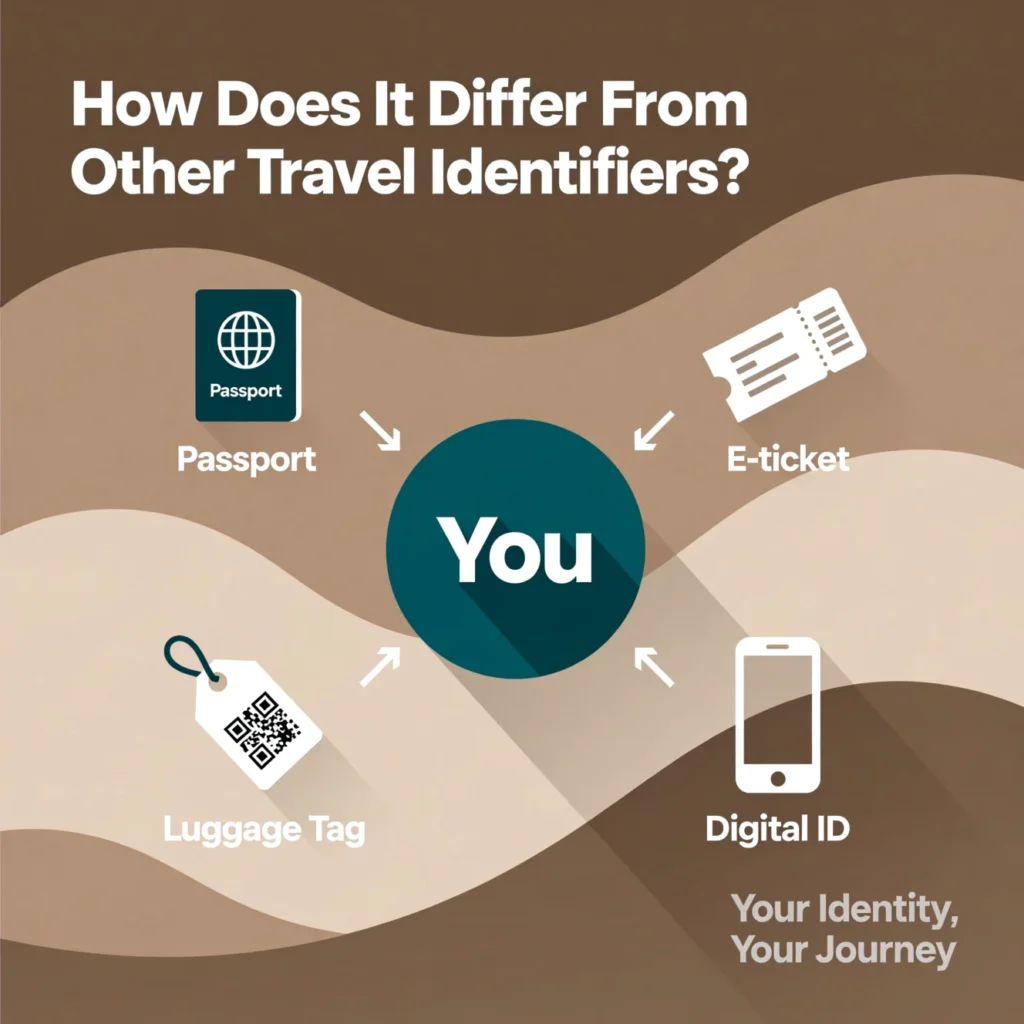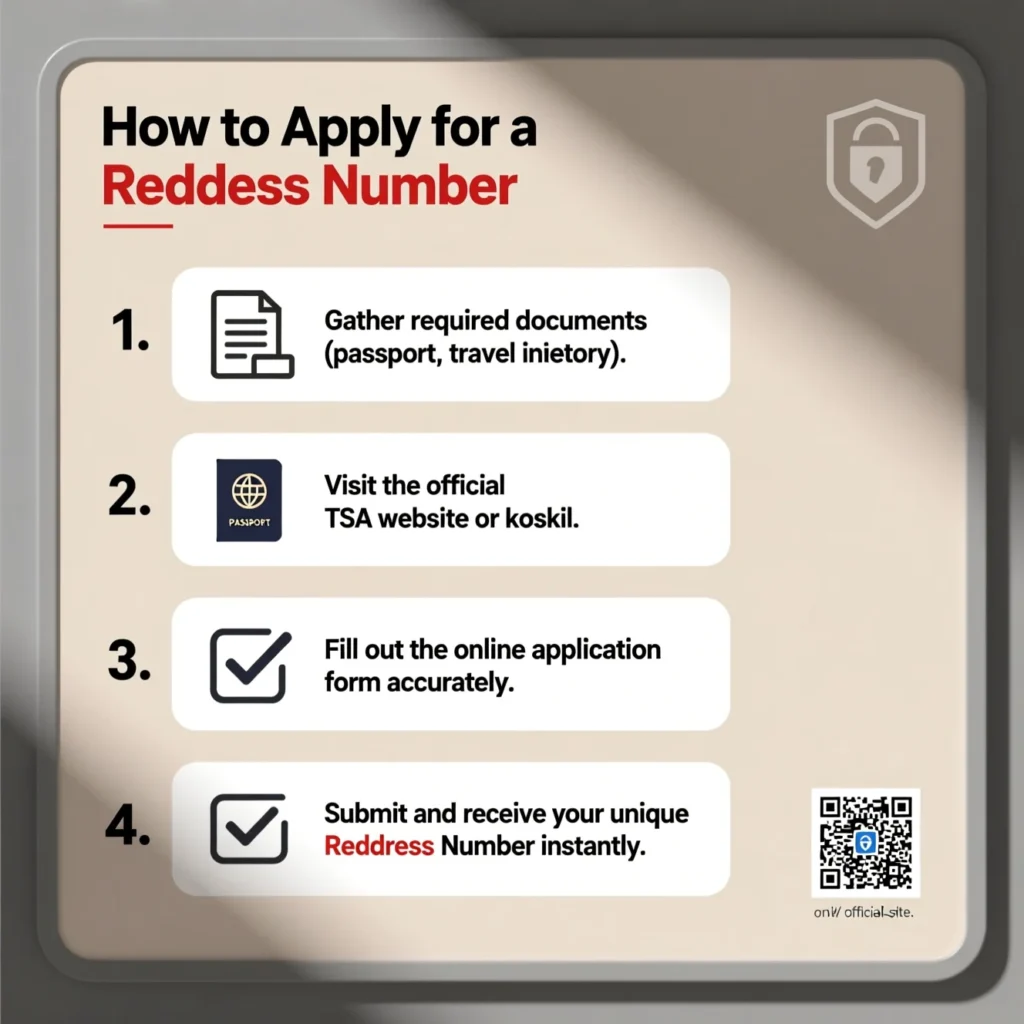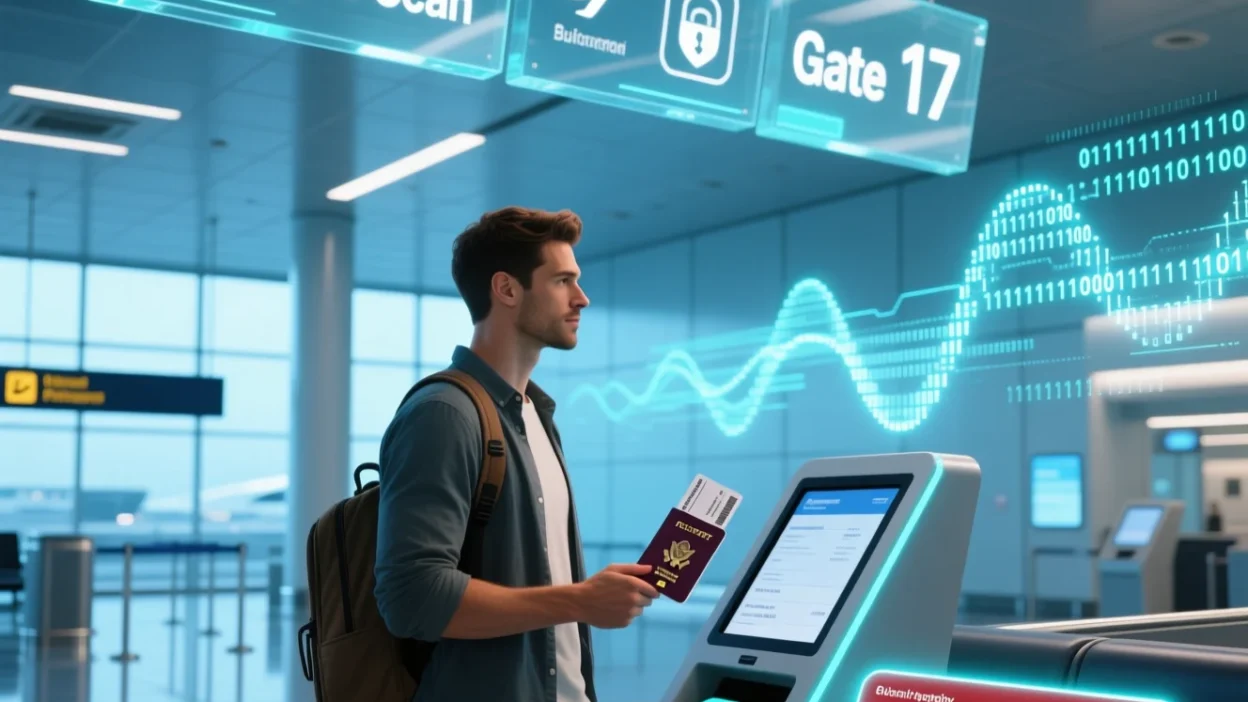If you’ve ever found yourself randomly flagged at airport security, delayed at check-in, or asked for a mysterious “redress number,” you’re not alone. In 2025 travel circles, the phrase “redress number” is getting more attention — and for good reason. It’s one of those behind-the-scenes travel triggers that can make the difference between a smooth boarding pass and a frustrating airport detour.
People love a smooth trip, after all. Think of a redress number as a kind of “identity safety net” for travellers whose names or details have inadvertently matched someone on a security watch-list or who experience repeated security hiccups. In this article you’ll learn the redress number meaning, how it works in practice, who actually needs one, and how to make sure you’re prepared — all explained in plain language and with that little travel-humour twist we all appreciate when dealing with airport form-fields.
💫 What Is a Redress Number?

- A redress number is a unique identifier issued by U.S. Department of Homeland Security (DHS) for travellers who faced screening issues.
- It’s a seven-digit code assigned through the Traveler Redress Inquiry Program (DHS TRIP) in the United States.
- Its purpose is to distinguish you if you’ve been repeatedly mistaken for someone on a watch-list.
- Having a redress number does not guarantee expedited screening—it addresses identity confusion instead.
- Most travellers will not need one; it is specific to recurring screening issues.
- Airlines and booking systems often have a field labelled “Redress Number” when entering traveller data.
- It is separate from other travel-program numbers such as Trusted Traveller or Known Traveller Numbers.
- The redress number’s meaning is basically “this traveller had a recognised issue; please treat them accordingly.”
- It helps airlines and security systems match the correct identity to you, reducing false-flags.
- In short: it’s your identity correction-tool in the travel security world.
🌱 Why Does a Redress Number Exist?
- Sometimes travellers share a name or birth-date with someone on a security database, causing repeated delays.
- Without a redress number, you might constantly be referred to secondary screening for no obvious reason.
- The travel system needed a way to separate “historic case” from “innocent traveller” – redress helps that.
- It’s essentially about fairness: if you’re repeatedly pulled aside through no fault of your own, you can apply for relief.
- As global travel increases, systems must reduce friction for innocent travellers; redress is part of that solution.
- Also, from a security-system view, it reduces false positives (which waste resources).
- The meaning of redress number therefore includes “resolve an identity confusion” not “ease all security.”
- A frequent-flyer or business traveller who flies often and repeatedly faces screening may benefit.
- In 2025, with more data-matching systems, the risk of mis-match increases, so the redress number remains relevant.
- Ultimately: the redress number means “we’ve acknowledged your case and you’re in the clearance-loop.”
🧘 How Does It Differ From Other Travel Identifiers?

- Unlike a TSA PreCheck or Global Entry program (which offer faster security), a redress number handles identity issues.
- A Known Traveller Number (KTN) allows expedited lanes; a redress number does not.
- A redress number is free to apply for, whereas trusted-traveller programs often have fees.
- Duration: A redress number remains your identifier indefinitely; other programs may need renewal.
- Use case: You request redress because you were mis-identified; you request PreCheck because you want faster screening.
- Booking a flight: The redress number field is optional and only relevant if you have one.
- Redress ≠ membership in a travel-benefit program—it’s a corrective measure.
- The redress number’s meaning includes “I’m cleared for identity” whereas a KTN says “I’m eligible for perks.”
- Mixing them up can lead to confusion at check-in or security.
- Clarity: know that redress number meaning = identity resolution, not faster line access.
💭 Who Should Consider Getting a Redress Number?
- Travellers who have repeatedly been referred to secondary screening without clear cause.
- People whose names or birth-dates closely match someone on a no-fly or watch-list.
- Travelers who have been denied boarding, or delayed excessively due to screening issues.
- Individuals who frequently travel to the U.S. and face border or security confusion.
- Those who have tried everything else (name checks, frequent-flyer profiles) and still face issues.
- It’s less for casual vacationers and more for those with repeated patterns of screening problems.
- If you never had a security issue, you likely don’t need one—applying may be unnecessary.
- Business travellers whose time is critical may find smoothing out identity delays beneficial.
- After receiving a redress number, make sure you add it to your airline profile each time you book.
- The meaning for you: if you keep seeing “why am I stopped?” then redress number may be relevant.
💼 How to Apply for a Redress Number

- Visit the official DHS TRIP website and fill out the application-form describing your travel issue.
- Submit required personal details: legal name, date of birth, contact info, travelling details.
- Provide supporting information: flight dates, booking numbers, descriptions of delays or screenings.
- After submission, you will receive a unique seven-digit redress control number.
- It may take several weeks for processing—so apply ahead of future travel if possible.
- Once issued, add the number to your frequent-traveller profile and every flight reservation.
- When booking, use the “Redress Number” field in booking systems if available.
- If issues persist after redress, you may need to follow up—application is not a guarantee.
- Keep correspondence and your redress number handy for future bookings.
- Essentially: applying gives you a tool; using it properly gives it effect.
🚦 What to Do With Your Redress Number When You Travel
- Enter it in the booking profile when reserving a flight to the U.S. or on international segments.
- When checking in, ensure your airline record shows the redress number—this helps avoid mis-match screening.
- Use the same legal name in booking as you used in your redress application.
- At airport security, having the number may smooth certain checks—but still carry proper ID.
- If you face issues again, reference the fact you have a redress number when speaking to airline or TSA staff.
- Monitor whether your boarding process improves after using the number.
- If you change your name or passport, update your profile (the number stays the same).
- Use the redress number in combination with other travel ID fields if required.
- Don’t rely solely on the number—errors, system mismatches or other factors may still cause delays.
- The meaning here: your redress number is your “identity assurance backup” in travel systems.
⚠️ Common Mis-Interpretations & Limitations
- It is not a fast-track or luxury travel program—it doesn’t offer special lanes.
- It won’t protect you if you have other legal or immigration issues.
- Having one doesn’t mean you’ll never be stopped again—other factors remain. > “Still stopped despite redress number…” from traveller forum.
- Applying for one when you don’t need it won’t hurt—but it may be an unnecessary wait.
- Misunderstanding it as a “ticket to skip security” can create false expectations.
- The redress number meaning is corrective, not fundamentally transformative.
- If your underlying travel status is problematic, redress alone cannot fix that.
- Some travellers see reduced issues; others still face delays—results can vary.
- Systems at airlines vary—just having the number doesn’t guarantee seamless integration.
- Stay informed: know its meaning, know its limits.
🔍 What It Means for Travel in 2025

- As travel volumes rebound, identity-screening complexities increase—so redress numbers matter more.
- Booking systems, airlines and security programs increasingly ask for more data fields; the redress field is one of them.
- With global travel and shared names, the meaning of “identity confusion” is more real than ever.
- In 2025, business travellers and frequent flyers have become especially aware of redress numbers.
- Mobile booking apps now often include “Do you have a redress number?” field automatically.
- Knowing the meaning of a redress number can reduce stress at check-in.
- Travel-bloggers and forums in 2025 increasingly talk about redress number experiences.
- For travellers from countries outside the U.S., knowing the concept is helpful when flying into the U.S.
- The meaning for 2025: being proactive with your identity in travel systems can smooth your journey.
- In effect: redress number meaning = “travel savvy + identity clarity” in modern flying.
❓FAQs
1. What is a redress number?
It’s a unique identifier issued by DHS for travellers who’ve had repeated screening or identity-match issues.
2. Who needs a redress number?
Travellers who experience secondary screening frequently, are denied boarding, or believe they’re being mis-identified.
3. How long does it take to get one?
Processing time varies—application to issuance may take weeks depending on workload.
4. Is it the same as TSA PreCheck or Global Entry?
No. PreCheck/Global Entry are trusted-traveller programs; a redress number resolves identity issues.
5. Will it guarantee no more delays at airport security?
No guarantee—while it helps identity matching, other factors may still cause delays.
6. Do I have to pay for it?
No, applying for and receiving a redress number through DHS TRIP is free.
7. What if I never had screening issues—should I apply anyway?
Probably not necessary; it’s intended for those with repeated issues, not casual travellers.
8. Where do I enter my redress number when booking?
In the traveller profile or booking form’s “Redress Number” field if available; also give to your airline.
9. Can the number be used for international travel?
Yes—while issued by the U.S., it applies when booking flights that interface with U.S. security/airport systems.
10. What’s new about redress numbers in 2025?
In 2025 there’s greater awareness; booking apps and frequent-traveller profiles more often include the redress field and many travellers know to check it.
🕊️ Conclusion
Understanding the redress number meaning equips you with one more tool in the modern travel toolkit. It reminds you that even if your name, passport or profile triggers “extra screening” by mistake, there’s a formal way to ask for resolution. But it also reminds you: this is not a magic pass to skip security—it’s a path to clarity. If you’ve repeatedly faced delays, boarding issues or screening mandates without clear reason, applying for a redress number may be worth it. Insert that unique seven-digit code in your bookings, stay consistent with your legal details, and travel with a little less stress knowing you’ve done what you can to align your identity with the systems. Safe travels!



